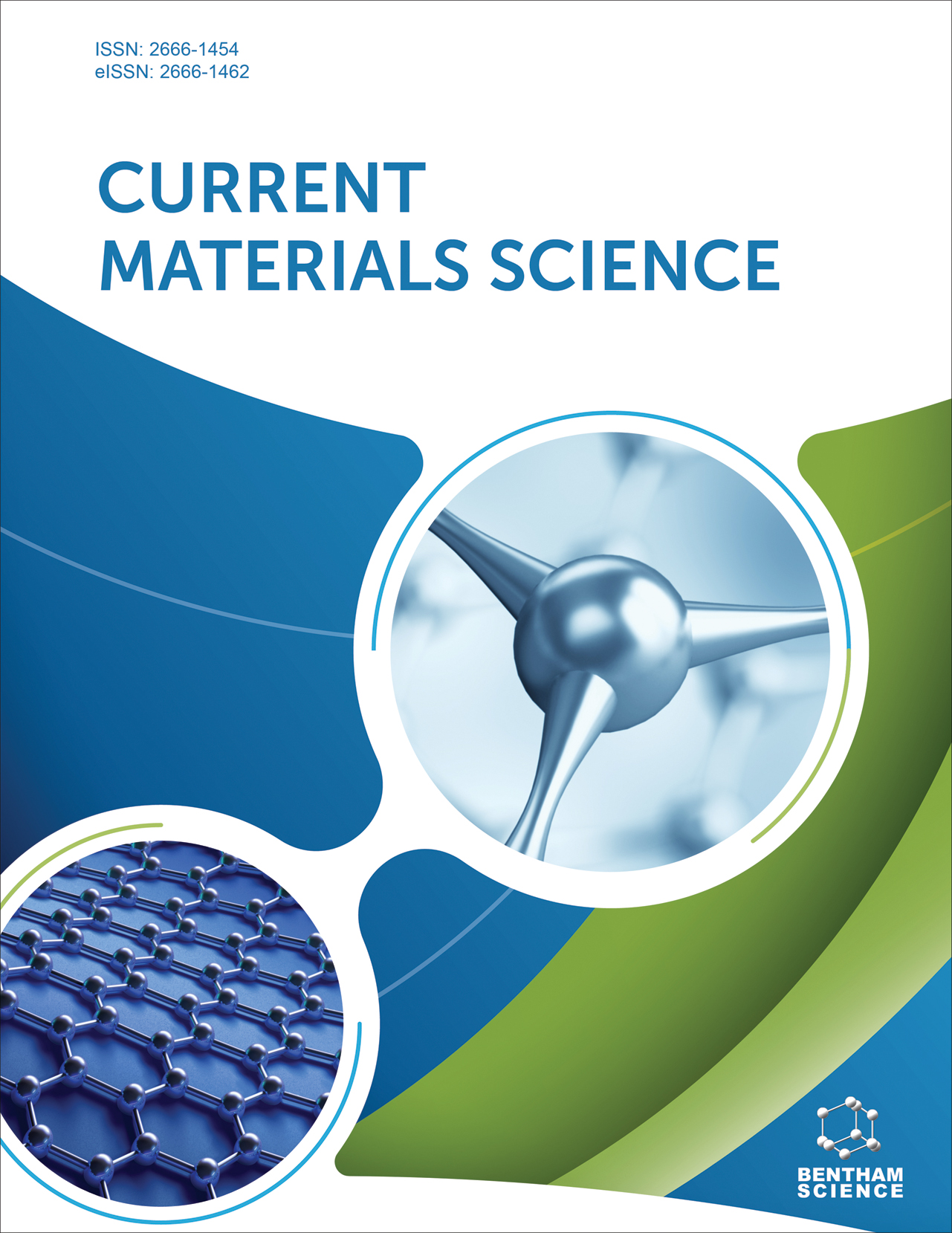- Home
- A-Z Publications
- Current Materials Science
- Previous Issues
- Volume 16, Issue 4, 2023
Current Materials Science - Volume 16, Issue 4, 2023
Volume 16, Issue 4, 2023
-
-
A Review on Mechanical Properties of Natural Fibre Reinforced PLA Composites
More LessPresently, scientists and researchers are in an endless quest to develop green, recyclable, and eco-friendly materials. Natural fibre reinforced polymer composites became popular among materialists due to their lightweight, high strength-to-weight ratio, and biodegradability. However, all-natural fibre reinforced polymer composites are not biodegradable. Polymer matrices like poly-lactic acid (PLA) and poly-butylene succin Read More
-
-
-
Electrospun Polymer Nanofibers for Technology Applications: A Short Review
More LessAuthors: Ankush Sharma, Rajesh K. Sharma, J.M. Nunzi, Aman Mahajan, Davinder Pal Sharma and Dinesh PathakNanofibers are a type of nanomaterial with a diameter ranging from ten to a few hundred nanometers with a high surface-to-volume ratio and porosity. They can build a network of high-porosity material with excellent connectivity within the pores, making them a preferred option for numerous applications. This review explores nanofibers from the synthesis techniques to fabricate nanofibers, with an emphasis on the t Read More
-
-
-
Plant-derived Gums and Mucilages: A Food for Thought for Researchers to Develop Pharmaceuticals
More LessAuthors: Venu Raghuvanshi, Keshav Bansal and Meenakshi BajpaiHumans have been using plant-derived gums for a variety of purposes since the beginning of time. Gums and mucilages are common natural materials utilised in both traditional and innovative dosage forms. Natural polymers are found to be very effective after incorporation in novel dosage forms to fulfill specific roles, resulting in improvements in drug delivery by increasing the drug expulsion rate and absorption. Na Read More
-
-
-
Cerium Containing Siliceous MCM-22: Preparation, Characterization and its Potential Application towards Oxidation of Isoeugenol to Vanillin
More LessAuthors: Preeti Sahu, Soumya B. Narendaranth and Ayyamperumal SakthivelAim: Preparation of cerium containing silicious MCM-22 zeolite material and explore its application for biomass conversion. Background: Zeolites and zeolite like microporous materials are well known as potential heterogeneous acid catalysts, whose discovery has made a significant impact in the petroleum, petrochemical and fine chemical industries. In recent years, zeolite, zeolites like molecular sieves, and inorganic oxide-b Read More
-
-
-
Comparison of Single-Pass Differential Speed Rolling (DSR) and Conventional Rolling (CR) on the Microstructure and Mechanical Properties of Mg5Zn
More LessAuthors: Christopher Hale, Zhigang Xu, Honglin Zhang, Sergey Yarmolenko and Jagannathan SankarBackground: The primary hot rolling method implemented is differential speed rolling (DSR). The material is rolled and grains are strained, producing fine dynamic recrystallization (DRX) grains that improve material strength and ductility. Objective: The material introduced and under investigation in this paper is an Mg-based alloy, Mg5Zn (wt. %), whose microstructure is enhanced through a combination of heat treatm Read More
-
-
-
Macroporous Nanostructured Calcium Phosphate/Chitosan-Gelatin Composite Bone Tissue Engineering Scaffold
More LessAuthors: Efaf Beman, Shokoufeh Borhan, Saeed Hesaraki and Nader NezafatiBackground: Tissue engineering is an emerging technology developed for the therapeutic reconstruction of damaged tissue. Objective: In this study, a ceramic/polymer nanocomposite bone tissue engineering scaffold was prepared by coating a tetracalcium phosphate/dicalcium phosphate mixture slurry on a porous 3D chitosan-gelatin construction. Methods: The phase composition, structural groups, and morphological asp Read More
-
-
-
Solid Oxide Membrane-assisted Controllable Electrolytic Fabrication of Ti5Si3/TiC Composites in Molten Salt
More LessAuthors: Kai Zheng, Cuilian Shi, Haitao Luo, Haifeng Gong and Jierui LiBackground: The titanium silicide Ti5Si3 possesses many desirable properties, such as a high melting point, excellent high-temperature oxidation resistance, low density, and relatively high hardness, and it is considered a promising structural intermetallic compound. However, like most ceramic materials, originating from low symmetry (D88) in its crystal structure, Ti5Si3 has poor fracture toughness and limited flexibility Read More
-
Most Read This Month
Article
content/journals/cms
Journal
10
5
false
en


